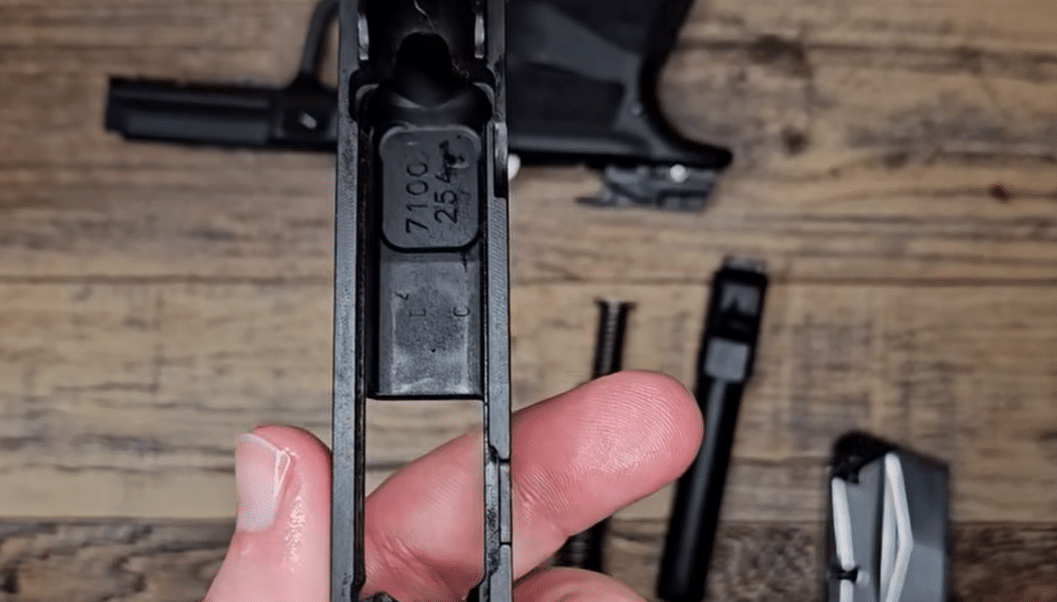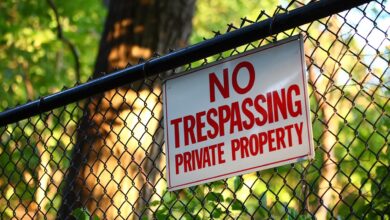What Is A Squib Load? 10 Things To Know To Avoid Disaster

A squib load is a malfunction that can occur in a firearm, where a bullet does not have enough force to exit the barrel. This can be incredibly dangerous, as the obstructed barrel can cause subsequent shots to result in catastrophic failure of the firearm, potentially leading to serious injury or death. Understanding squib loads, recognizing their symptoms, and knowing how to avoid and respond to them are critical for every responsible gun owner.
We’re going to do a deep-dive here, so sit back and relax while learning all about this almost entirely preventable topic.
While you’re here, also be sure to take a look at our extensive Beginners Guide library, which covers hundreds of topics as they relate to concealed carry and firearm ownership.
Enough intro. Let’s get into it!
What Is a Squib Load?
To get a solid foundation, let’s start with the big question. Once you understand what you’re working with, it’s much easier to learn all of the other important details.
A squib load, also known simply as a “squib,” occurs when a cartridge is underpowered and fails to propel the bullet out of the barrel. This situation can arise due to various factors, including insufficient powder charge, where the cartridge contains too little gunpowder, failing to generate enough pressure to push the bullet through the barrel. In some cases, only the primer ignites, leading to a small explosion that moves the bullet partway into the barrel without igniting the powder charge. Another common cause is an obstructed barrel, where residue, debris, or a previously fired bullet can block the barrel, preventing a new bullet from exiting properly.
Understanding the mechanics of a squib load requires a deeper look into the ammunition components. Each cartridge consists of a case, primer, gunpowder, and bullet. When the primer is struck by the firing pin, it ignites the gunpowder, creating gases that build up pressure and propel the bullet forward. If any component of this process is compromised, such as insufficient powder or a defective primer, the bullet may not receive enough force to exit the barrel, resulting in a squib load.
Dangers of Squib Loads
The primary danger of a squib load is the potential for a subsequent shot to be fired with the barrel obstructed. This can cause severe barrel damage, often leading to a bulged or ruptured barrel, rendering the firearm unsafe to use. In more extreme cases, the built-up pressure can cause the firearm to explode, posing a significant risk of severe injury or death to the shooter and bystanders. The explosion can also result in bullet fragments and shrapnel causing injuries to the shooter’s hands, face, or other body parts.
Beyond the immediate physical dangers, squib loads can have lasting impacts on a shooter’s confidence and trust in their equipment. Experiencing a squib load can be a traumatic event, leading to hesitation or fear when firing subsequent shots. This psychological impact can be just as debilitating as the physical risks, affecting the shooter’s performance and enjoyment of the sport.
How to Recognize a Squib Load
Recognizing a squib load is crucial to prevent further damage or injury. There are several signs that may indicate a squib load. One of the most noticeable is an unusual sound; a squib load often produces a much quieter “pop” or “puff” sound compared to the typical loud report of a normal discharge.
Another indicator is reduced recoil, where the felt recoil from a squib load is significantly less than that of a regular shot. In semi-automatic firearms, a squib load may fail to cycle the action completely. Additionally, there may be no visible impact on the target, indicating the bullet did not exit the barrel.
To illustrate, imagine firing a shot and hearing a subdued “puff” instead of the expected bang. The absence of the sharp recoil that usually accompanies a shot would be another red flag. If the firearm is a semi-automatic, you might notice that the slide or bolt does not fully cycle, failing to eject the spent casing or chamber a new round. These signs are critical to identify quickly to avoid the temptation of firing another round, which could result in catastrophic failure.
Preventing Squib Loads
Preventing squib loads involves careful attention to detail during the loading process and proper firearm maintenance. Investing in high-quality factory ammunition from reputable manufacturers can significantly reduce the risk of squib loads. Avoid using reloaded or hand-loaded ammunition unless you are experienced and meticulous in your reloading practices. It is also essential to inspect your cartridges for signs of defects, such as inconsistent powder levels or improperly seated bullets, before use.
Proper storage of ammunition is crucial. Store your ammunition in a cool, dry place to prevent degradation of the powder and primers. Regularly cleaning and maintaining your firearm helps avoid barrel obstructions and ensures reliable operation. If you reload your own ammunition, double-check powder charges and seating depths to ensure consistency. These preventive measures can help you avoid the dangerous consequences of squib loads.
A responsible reloader will take meticulous steps to ensure that every cartridge is loaded correctly. This includes using precise measurement tools to check powder charges and inspecting each round for defects. Keeping a clean and organized reloading bench can also prevent cross-contamination and errors. By following these practices, reloaders can maintain a high level of quality and consistency in their ammunition, significantly reducing the risk of squib loads.
What to Do If You Experience a Squib Load
If you suspect a squib load while shooting, it is essential to follow specific steps to ensure your safety. First, cease firing immediately to prevent further damage or injury. Next, safely unload your firearm, removing the magazine and clearing the chamber. Inspect the barrel using a cleaning rod or similar tool to check for any obstructions. If a bullet is lodged inside, do not attempt to fire another round. If you are unable to remove the obstruction yourself, take your firearm to a qualified gunsmith for inspection and repair.
Handling a squib load situation requires calm and methodical action. Panicking or rushing can exacerbate the problem, potentially leading to a dangerous situation. By taking the time to carefully inspect and address the issue, you can ensure your safety and the integrity of your firearm.
Additional Safety Measures and Considerations
Beyond the basics of recognizing and responding to squib loads, there are additional tips to enhance your overall firearm safety. Always follow range safety rules and be aware of your surroundings, ensuring that those around you are also practicing safe shooting habits. Wearing appropriate safety gear, including eye and ear protection, whenever you are handling or shooting firearms, is crucial.
Regularly inspect your firearms for signs of wear or damage and address any issues promptly to maintain safe operation. Continuously educate yourself on firearm safety practices and consider taking courses to improve your knowledge and skills. Being alert and aware of your environment and the condition of your equipment can help you identify potential issues before they become serious problems.

For instance, a routine inspection of your firearm might reveal small cracks or signs of wear that could lead to more significant issues if left unaddressed. By catching these problems early, you can prevent malfunctions and maintain the reliability of your firearm. Education and training are equally important, as they keep you updated on the latest safety practices and techniques, ensuring that you are always prepared to handle any situation safely.
Irresponsible Gun Ownership
While responsible gun ownership includes understanding and mitigating risks like squib loads, it is equally important to address the consequences of irresponsible gun ownership.
Negligence or ignorance in handling firearms can lead to accidental discharges, injuries, and fatalities. Failing to clean and maintain firearms can lead to malfunctions, including squib loads, which increase the risk of accidents. Leaving firearms unsecured or accessible to unauthorized individuals, such as children or inexperienced users, can result in tragic accidents. Owning a firearm without adequate training can lead to improper handling, misuse, and an inability to respond correctly to malfunctions like squib loads. Disregarding fundamental safety rules, such as keeping the muzzle pointed in a safe direction and keeping the finger off the trigger until ready to shoot, can cause preventable incidents.
The tragic consequences of irresponsible gun ownership cannot be overstated. Accidents resulting from negligence not only harm the individuals involved but also contribute to negative perceptions of gun ownership in society. By committing to responsible practices, gun owners can help prevent these tragedies and promote a culture of safety and respect.
Importance of Community and Peer Education
Educating others about firearm safety and the dangers of squib loads is an important aspect of responsible gun ownership. By sharing knowledge and experiences, gun owners can help create a safer community. Participating in or establishing a local firearm safety group to discuss best practices, share experiences, and promote safe handling techniques can be beneficial. Organizing workshops or seminars on firearm safety, focusing on recognizing and preventing squib loads, among other topics, can help spread awareness. Offering guidance and mentorship to new gun owners can help them develop safe habits and understand the importance of regular maintenance and proper ammunition usage.
Community education initiatives can take many forms, from formal classes to informal discussions among peers. The goal is to create an environment where knowledge and experience are shared openly, fostering a culture of continuous learning and improvement. By doing so, gun owners can collectively raise the standard of safety and responsibility within their communities.
Case Studies and Real-Life Examples
Understanding squib loads can be further enhanced by examining real-life examples and case studies. These examples provide valuable insights into how squib loads occur and the consequences of improper handling.
For instance, a competitive shooter experienced a squib load during a match. The shooter recognized the unusual sound and lack of recoil, ceased firing immediately, and inspected the firearm. The bullet was lodged halfway down the barrel, and the shooter safely removed the obstruction, avoiding potential injury and damage.
In another case, a recreational shooter at a local range failed to recognize a squib load and fired a subsequent round. The obstructed barrel caused the firearm to explode, resulting in severe hand injuries. This incident highlights the importance of recognizing and responding to squib loads promptly.
Similarly, a hunter using reloaded ammunition experienced multiple squib loads due to inconsistent powder charges. The hunter learned the importance of meticulous reloading practices and switched to factory ammunition to ensure safety in future hunts.
These case studies underscore the importance of vigilance and proper response when dealing with squib loads. Each scenario provides valuable lessons that can be applied to prevent similar incidents in the future. By learning from these real-life examples, gun owners can better understand the risks and take proactive steps to mitigate them.
Conclusion
Understanding squib loads is essential for every gun owner, as recognizing and properly responding to this malfunction can prevent severe injuries and save lives. By following the preventive measures outlined above, you can reduce the likelihood of experiencing a squib load and ensure safe firearm operation.
Remember, responsible gun ownership is not only about having a firearm but also about maintaining it, using it safely, and continually educating yourself about potential hazards. By sharing knowledge and experiences, gun owners can help create a safer community and promote responsible firearm use.
Safety Tip: Always be mindful of the ammunition you use and regularly inspect your firearm for any signs of malfunction. Proper maintenance and quality ammunition can significantly reduce the risk of squib loads and other dangerous malfunctions.
Read the full article here




